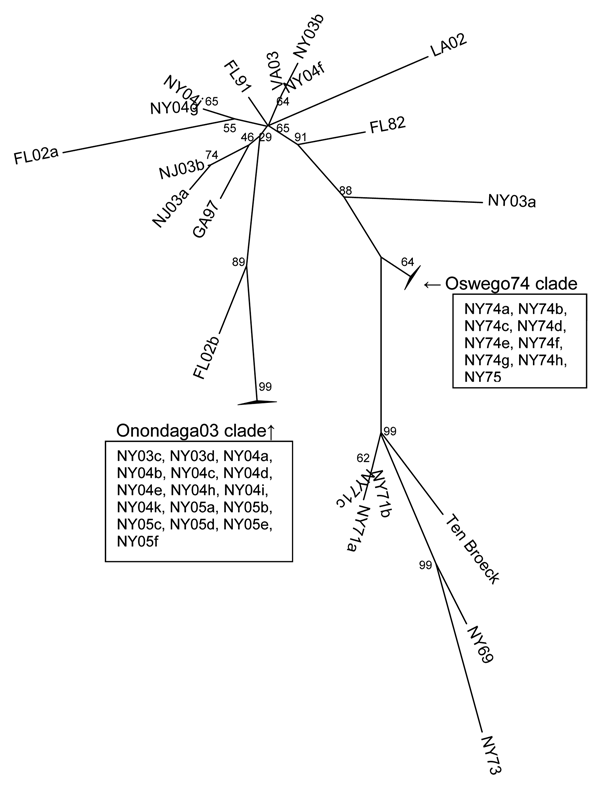Volume 14, Number 3—March 2008
Research
Molecular Epidemiology of Eastern Equine Encephalitis Virus, New York
Figure 3

Figure 3. . Phylogenetic tree of subset of lineage I eastern equine encephalitis virus strains, unrooted neighbor-joining analysis of E2 coding region. Strains included are identical to those used in the NSP3 coding region analysis.
Page created: June 27, 2012
Page updated: June 27, 2012
Page reviewed: June 27, 2012
The conclusions, findings, and opinions expressed by authors contributing to this journal do not necessarily reflect the official position of the U.S. Department of Health and Human Services, the Public Health Service, the Centers for Disease Control and Prevention, or the authors' affiliated institutions. Use of trade names is for identification only and does not imply endorsement by any of the groups named above.